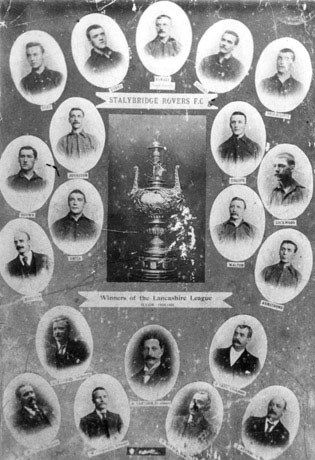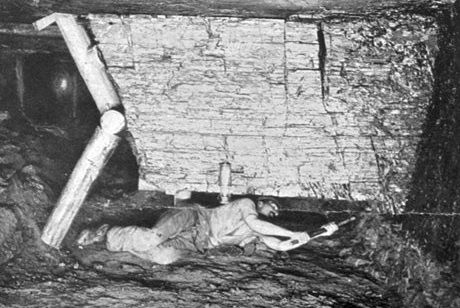Ashton Is Stranger Than Fiction – The Old Street Tobacconist

Why would a tobacconist from Old Street, Ashton under Lyne be worthy of the paragraphs in our blogs under Ashton is stranger than fiction series? The reason is simple, the gentleman happened to be the first mixed-race professional footballer to play English league football and world football. The man was Arthur Wharton born on 28th October 1865 in Jamestown, South Africa.
In the following paragraphs, we follow the history of a fascinating individual who began his life in what is now Ghana; the son of the union between Ghanaian royalty, Annie Florence Egyriba and a Grenadian Henry Wharton. We hope you enjoy this Ashton is stranger than fiction diversion from our normal pipeline supply blogs.
Continuing our story, Arthur Wharton moved to England in 1882 to train as a Methodist Minister, which he soon abandoned to follow his passion and become a full-time athlete. His athletic prowess soon won recognition after equalling the amateur 100-yard sprint world record of 10 seconds in 1886; this was achieved in the AAA championship of that year. Arthur Wharton was a prolific sportsman, as well as achieving remarkable things in athletics; he was a well-known cyclist and cricketer but he is best remembered as a footballer.
Ashton-under-Lyne, Arthur Wharton, Footballer
Arthur Wharton began his career as a footballer playing for Darlington in 1885, moving to Preston North End in 1886 and then turned professional for Rotherham United in 1889. A move to Sheffield United in 1894 proceeded his first stint as a Stalybridge Rover’s player in the Lancashire Combination in 1895. He followed this with two seasons playing for Ashton North End before returning to Stalybridge Rovers for one of their most successful periods. Winning the Lancashire Combination League and Cup between 1899 and 1901. According to some sources, he was a player, manager and goalkeeper during this period at Stalybridge Rovers; Arthur Wharton ended his football career in the 1901/02 season playing for Stockport County.
Ashton-under-Lyne and Tameside’s Lost Football Clubs
Although we digress a little from Arthur Wharton in these paragraphs, it is worth mentioning two football sides that many will not recognise in the modern era. Stalybridge Rovers FC and Ashton North End FC. Stalybridge Rovers were formed in 1894 and were only in existence for a mere 12 years; as they disbanded in 1908.
two football sides that many will not recognise in the modern era. Stalybridge Rovers FC and Ashton North End FC. Stalybridge Rovers were formed in 1894 and were only in existence for a mere 12 years; as they disbanded in 1908.
Several famous football names played for this side and apart from Arthur Wharton they included the man known as the father of Arsenal, Herbert Chapman; he played for them in around 1897. According to history, other players included Tommy Briercliffe, John Johnston and Frank Thorpe; so they were not a small club by any means as at least two of these players went on to become FA Cup winners.
Ashton North End Football Club was formed in 1891 with a ground on Manchester Road, Ashton under Lyne. This small club nicknamed the Onions had an excellent record in their fleeting time in football. They were the Ashton and District League Champions in 1892; following this success they joined the Combination League the following season.
Ashton North End FC went on to win the Combination League in 1895, from which they became a member of the Lancashire League till they suffered bankruptcy in 1899. In common with Stalybridge Rovers, their two most famous players were Arthur Wharton and Herbert Chapman. Two footballing gentlemen who later in their careers took teams to league and cup success. Herbert Chapman took both Huddersfield Town and Arsenal to Football League First Division titles.
Arthur Leaves Rovers and Returns
Continuing with our key subject the late great Arthur Wharton, his story continues in Ashton under Lyne following his successful footballing career. In 1897 following his move from Stalybridge Rovers to Ashton North End; due to an apparent falling out with the Stalybridge management team. Arthur Wharton opened a tobacconist shop on Old Street Ashton under Lyne and it is not clear how long he owned this business. After the demise of Ashton North End Arthur re-joined Stalybridge Rovers with Herbert Chapman before as previously stated ending his career at Stockport County in 1902.
The End of an Era
 At this point in his life, Arthur Wharton the sports allrounder became a colliery worker at Edlington Yorkshire. He started life as a colliery haulier but by 1911 he became a fully-fledged Collier. At the time he lived with his Wife Emma Wharton nee Lister in the Yorkshire Village of Moorthorpe; where he remained until he died in 1930. Sadly, the great man was buried in a pauper’s grave, without even a stone to mark its position.
At this point in his life, Arthur Wharton the sports allrounder became a colliery worker at Edlington Yorkshire. He started life as a colliery haulier but by 1911 he became a fully-fledged Collier. At the time he lived with his Wife Emma Wharton nee Lister in the Yorkshire Village of Moorthorpe; where he remained until he died in 1930. Sadly, the great man was buried in a pauper’s grave, without even a stone to mark its position.
This was not rectified until 1997 when a headstone was placed on his grave and at the same time, Arthur Wharton rightly entered the English Football Hall of Fame. Following this, in 2012 a small statue of Arthur was presented to the then FIFA president Sebt Blatter and is now permanently on display at their headquarters in Zurich. In the same year, he was honoured with the unveiling of a Blue Plaque in Ashton under Lyne, this can be found at Curzon Ashton Football Club; which is probably closest to the venue of Ashton North End FC.
Would the Modern-Day Arthur Wharton be on our TV Screens?
The final and probably the most fitting tribute to remember Arthur Wharton was the unveiling of his Statue at the National Football Centre at St George’s Park in 2014. The home of English Football is a place to inspire future generations of young players; Arthur’s story from his early life to his great sporting achievements shows that anything is possible if you are willing to work at it. In the modern era, Arthur Wharton would have left football to become a coach or even a pundit on Sky Sports. In the grime of the early 20th Century you had to work to live and eat; and in choosing life in a Colliery, shows that his work ethic was as strong as his sporting prowess.
Get started in seconds!
Save your details, view past orders, and enjoy a faster checkout every time.